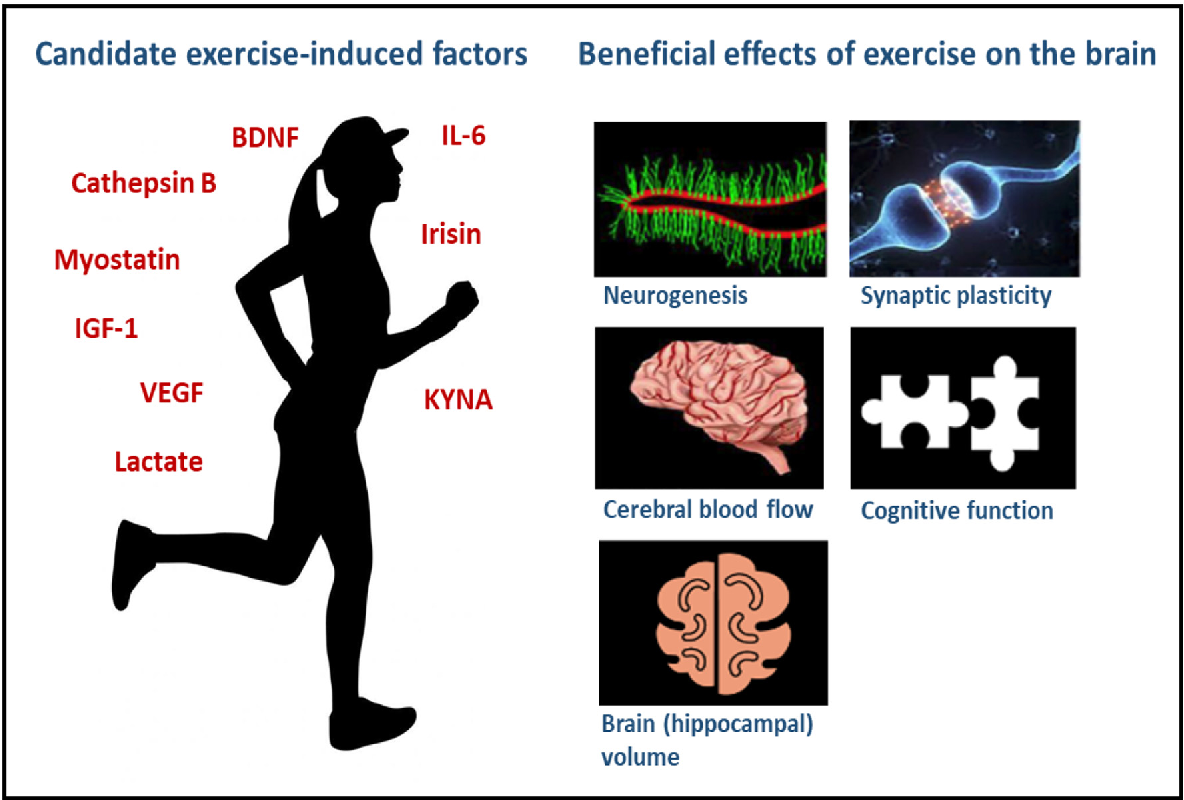Want to catch up with the other articles in this series?
Part 1: What is the impact of endurance training on human lifespan?
Part 1.1: What is VO2max?
Part 2: What are training zones?
Part 2.1: How do muscle fiber types correspond to training zones?
Part 2.2: Training zones 1, 2 and 3
Part 2.3: Training zones 3, 4, 5 and 6
Part 2.4: Moderate intensity vs. high intensity exercise
Part 3: By which mechanisms does exercise delay aging and prevent chronic disease?
Part 3.1: What are the cardiovascular adaptations to endurance training?
Part 3.2: What are the metabolic adaptations to endurance training?
Part 3.3: Can exercise prevent or even treat cancer?
Part 3.4: How does exercise impact the immune system?
Part 3.5: Exercise as a therapy for neurodegeneration and conclusions
Exercise as a therapy for neurodegeneration
Endurance training is beneficial for Alzheimer’s disease patients as it improves several features of the disease pathophysiology, including oxidative stress regulation and neurogenesis.
Exercise also increases the production of neurotrophic factors such as BDNF, which can help maintain brain function and promote neuroplasticity. It seems that increasing VO2max leads to a dose-response relationship associated with increased BDNF levels.
BDNF stands for Brain-Derived Neurotrophic Factor. It is a protein that plays a critical role in promoting the growth, survival, and differentiation of neurons in the brain. BDNF is involved in various functions such as learning and memory, mood regulation, and the development of the nervous system.
BDNF is synthesized in the brain and can be released by neurons in response to various stimuli, including physical exercise, stress, and environmental enrichment. It binds to specific receptors on the surface of neurons and promotes their survival, growth, and differentiation.
Research has suggested that BDNF may be involved in the pathophysiology of various neuropsychiatric disorders such as depression, anxiety, and schizophrenia.
Studies have shown that these effects are mediated by various molecular pathways, including those involving neurotransmitters and neuroendocrine mechanisms. Additionally, neurogenesis can still occur in specific areas of the adult hippocampus with physical exercise being able to change the rate of neurogenesis.

Conclusion
Regular exercise has a dose-response effect on humans, with higher levels of moderate-to-vigorous exercise being associated with longer life expectancy. Elite athletes, who sustain the highest possible exercise levels, usually live considerably longer than the general population. Exercise has a profound effect on the expression of a substantial proportion of our genome and can help to mitigate many of the negative effects of aging. Physical inactivity is becoming a major public health problem worldwide, and more research efforts should be devoted to understanding the molecular mediators of the benefits of exercise. This could help to determine the most effective combinations, types, and dosages of exercise for different age groups, and to implement efficient exercise interventions for these populations.


